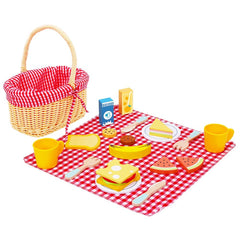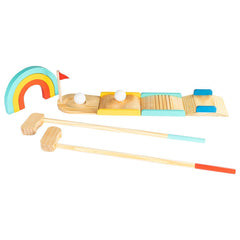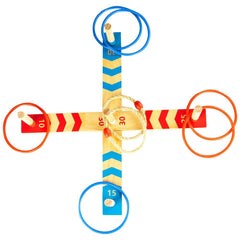Choosing toys for your toddler can feel confusing because there are so many options to consider. Among these many options, it’s difficult to know which toys will help your child grow and keep them interested.
To come to a decision, you first need to decide if you want to go for indoor toys, outdoor toys, or a mix of both. Broadly, indoor toys promote creative play, whereas outdoor toys promote movement.
To understand what your toddler truly needs, it’s important to look at why activity toys matter in the first place.
Why Do Activity Toys Matter?
Toddlers are curious explorers who learn best through movement. They enjoy stacking, crawling, climbing, and pretending. Activity toys are important because they support these activities and help your child grow by encouraging movement, thinking, imagination, and social skills.
But where your child plays also matters. This last point brings us to the different benefits of indoor and outdoor play.
Benefits of Indoor Play
Indoor play is made up of a safe and controlled environment that’s ideal for focus, calm, and creativity. It’s ideal for rainy days. It is also helpful for your child if he enjoys quiet time.
Have a look at these indoor toys and their benefits:
-
Wooden shape sorters, puzzles, and stacking toys
They help develop hand-eye coordination and fine motor skills.
-
Pretend play sets like kitchen toys and wooden dollhouses
They encourage creativity and imaginative role-play.
-
Drawing boards, building blocks, and musical instruments
They support artistic expression, spatial awareness, and rhythm.
These toys allow children to build patience, improve focus, and solve problems in a calm setting.
Benefits of Outdoor Play
While indoor play supports focused and creative learning, outdoor play brings in physical activity and sensory exploration. Being outside gives toddlers fresh air and plenty of space to move freely and explore the world around them.
Have a look at these outdoor toys and their benefits:
-
Balance bikes and push cars that help improve balance and coordination.
-
Slides, climbing frames, and ride-ons that challenge your child physically and build strength and gross motor skills.
-
Water play tables and sandpits that offer fun, sensory-rich experiences. These engage touch, sight, and creativity all at once.
-
Mini obstacle courses, which create fun opportunities for toddlers to test their physical skills while building resilience and focus.
Outdoor toys give toddlers a chance to challenge themselves physically while boosting mood, reducing screen time, and even improving sleep quality.
What’s Better?
The best choice is to combine both indoor and outdoor toys. Here’s why:
-
Helps Your Child Grow: Indoor toys help your child focus and use their imagination, whereas outdoor toys help them build physical strength. Needless to say, both are important.
-
Works in Any Weather: Your child can play outside when it’s sunny and inside when it’s rainy or cold. Having both means they can always have fun.
-
Keeps Play Fun: Changing between indoor and outdoor toys stops your child from getting bored. It can also help them sleep better and feel happier.
-
More Family Time: Indoor toys are ideal for quiet moments with family. Outdoor toys are fun for running and playing together. Having both means more enjoyable family time.
Think About Your Space
Not every home is big enough to have a large garden area or a giant playroom, and that’s okay. We are here to help. Let's look at a few options that can work well for your space:
For small homes: Pick small wooden toys like stacking sets or puzzles. They can fit into smaller spaces while still giving wings to your toddler's creativity and imagination. You can also consider foldable play mats or soft tunnels if you want to ensure active play indoors.
For outdoor spaces: Choose toys that can stay outside, like sandpits, ride-on cars, or water tables. Use umbrellas or play tents to give shade and keep your toddler safe on sunny days.
Final Thoughts
To conclude, it's not about indoor vs. outdoor play. It's more about striking a balance between the vast variety. By doing so, you can make space for your toddler’s flourishing curiosity and early development.
So, instead of looking for the “perfect” toys, pick a few good-quality, well-designed ones. These toys bring joy, help your child move, and support learning—regardless of where they play.
In the end, what really counts is not where they play, but how loved they feel while playing!
FAQs -
1. What age is best for introducing activity toys to toddlers?
You can start giving activity toys to toddlers who are one year old or older. At this age, they are full of energy and love to explore with their hands. Activity toys will keep them busy and help them learn.
2. Are wooden toys safe for toddlers?
Yes, wooden toys are often safer than plastic ones. That’s because they don’t have harmful chemicals. They also last longer and are better for the environment.
3. How can I make the most of outdoor toys in a small space?
You can do this by choosing foldable and small toys like push cars or mini water tables. Try different ideas—even a small balcony can become a delightful play area.





